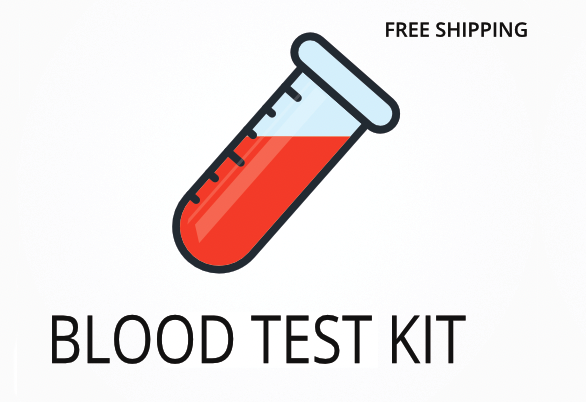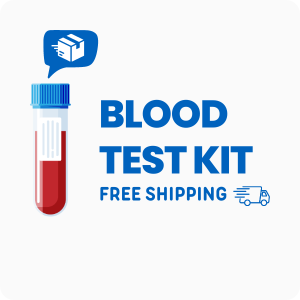Ordering the Comprehensive Heart Health Profile | Europe
The Comprehensive Heart Health Profile provides a detailed look at cholesterol, inflammation, and other markers linked to heart and blood vessel conditions. This test helps identify patterns that may not be found with standard cholesterol checks, such as early signs of artery blockage or hidden inflammation. Interestingly, research shows that some people with normal cholesterol can still have high risk due to other markers like Lp(a) or hs-CRP, which are included in this profile.
Ordering this test gives you a clear picture of your heart and blood vessel status, helping you and your doctor make informed decisions. Benefits of ordering include:
- Detects early changes in cholesterol and blood fats before symptoms appear
- Measures inflammation markers linked to artery damage
- Assesses risk for heart attack and stroke using advanced lipid and particle analysis
- Identifies insulin resistance, which can lead to diabetes and heart problems
- Provides detailed results to guide diet, exercise, and treatment plans
Who Should Consider Advanced Cardiovascular Screening
Someone who has a family history of heart disease but feels fine may want to know if hidden risks are present. For example, a person who exercises regularly and eats well but has a parent who had a heart attack at a young age might want to check for silent risk factors.
Ordering this test may also be helpful in these situations:
- Someone with high blood pressure that is hard to control
- A person with diabetes or prediabetes
- Anyone with unexplained fatigue or shortness of breath
- People who have gained weight quickly, especially around the waist
- Someone with a history of autoimmune conditions, as these can increase heart risk even if cholesterol is normal
This test can reveal hidden risks like high Lp(a) or inflammation that standard cholesterol checks may miss, allowing for early changes to lower the chance of heart attack or stroke. Delaying this test could mean missing the chance to catch silent warning signs before they become more serious.
Preparing for Advanced Lipid and Inflammation Testing
Fasting for 12 hours before your blood draw is usually required for this test to give the most accurate cholesterol and triglyceride results. Always follow any instructions your doctor or healthcare provider gives you, as they may have specific steps for you to take before your appointment.
Labs Included When Ordering Your Comprehensive Heart Health Profile
| Test Name | Reference Range | What This Test Measures | Low and High Levels of This Marker |
|---|---|---|---|
| Cholesterol and Lipoprotein Markers | |||
| Total Cholesterol | < 200 | Total cholesterol is the sum of all cholesterol types in your blood. It helps estimate your risk for heart and blood vessel problems. |
High levels mean a greater chance of artery buildup and heart disease.
Low levels mean possible issues with hormone production or absorption. |
| Total HDL | > 40 (men), > 50 (women) | HDL, or “good” cholesterol, helps remove extra cholesterol from your blood. Higher HDL is linked to lower heart risk. |
High levels mean better protection against artery buildup.
Low levels mean higher risk for heart and blood vessel problems. |
| Total LDL | < 100 | LDL, or “bad” cholesterol, can build up in artery walls. This test shows how much LDL is in your blood. |
High levels mean more risk for artery blockage and heart attack.
Low levels mean less risk for heart and blood vessel disease. |
| Triglycerides | < 150 | Triglycerides are a type of fat in your blood. High levels can raise the risk for heart disease and stroke. |
High levels mean increased risk for heart attack, stroke, and pancreatitis.
Low levels mean possible issues with nutrition or absorption. |
| Lp(a) | < 30 | Lipoprotein(a) is a type of cholesterol that can increase the risk of artery blockage, even if other cholesterol numbers are normal. |
High levels mean higher risk for early heart attack and stroke.
Low levels mean lower risk for artery buildup. |
| LDL-P (number of LDL particles) | < 1000 | LDL particle number shows how many LDL particles are in your blood. More particles can mean higher risk, even if total LDL is normal. |
High levels mean more risk for artery plaque and heart disease.
Low levels mean less risk for artery buildup. |
| HDL-P (number of HDL particles) | > 30 | HDL particle number measures how many HDL particles are in your blood. More particles help clear cholesterol from arteries. |
High levels mean better removal of cholesterol from blood.
Low levels mean less protection against artery buildup. |
| VLDL-P (number of VLDL particles) | < 50 | VLDL particles carry triglycerides in the blood. High numbers can raise the risk for artery plaque and heart problems. |
High levels mean more risk for artery plaque and heart disease.
Low levels mean less risk for artery buildup. |
| LDL-Size | > 21 | LDL size shows if your LDL particles are small and dense or large and fluffy. Small, dense LDL is more likely to cause artery plaque. |
High levels mean larger, less harmful LDL particles.
Low levels mean smaller, more dangerous LDL particles. |
| HDL-Size | > 8.8 | HDL size shows if your HDL particles are large or small. Larger HDL particles are better at removing cholesterol from arteries. |
High levels mean better cholesterol removal.
Low levels mean less effective cholesterol removal. |
| VLDL-Size | 38-54 | VLDL size shows how big your VLDL particles are. Larger VLDL particles can carry more triglycerides and may raise heart risk. |
High levels mean more triglyceride-rich particles.
Low levels mean fewer triglyceride-rich particles. |
| Inflammation and Risk Markers | |||
| hs C-Reactive Protein (CRP) | < 1.0 | High-sensitivity CRP measures inflammation in your blood vessels. High levels can mean higher risk for heart attack and stroke. |
High levels mean more inflammation and higher risk for heart events.
Low levels mean less inflammation and lower risk. |
| Fibrinogen | 200-400 | Fibrinogen is a protein that helps blood clot. High levels can make blood thicker and raise the risk for clots and heart attack. |
High levels mean more risk for blood clots and heart attack.
Low levels mean possible bleeding problems. |
| Homocysteine | < 10 | Homocysteine is an amino acid. High levels can damage blood vessels and raise the risk for heart and blood vessel disease. |
High levels mean more risk for artery damage and stroke.
Low levels mean less risk for blood vessel problems. |
| Lp-PLA2 (PLAC) | < 200 | Lp-PLA2 is an enzyme linked to inflammation in artery walls. High levels can mean more risk for heart attack and stroke. |
High levels mean more inflammation and higher risk for artery plaque.
Low levels mean less inflammation and lower risk. |
| Metabolic Markers | |||
| Insulin Resistance Score | < 45 | This score shows how well your body uses insulin. High scores mean your body is not using insulin well, which can lead to diabetes and heart problems. |
High levels mean more risk for diabetes and heart disease.
Low levels mean better insulin use and lower risk. |
Reference ranges may change slightly as labs update their standards, so always check your report for the most current values.
Comprehensive Heart Health Profile FAQ
Is there Comprehensive Heart Health Profile testing near me?
This is a test kit that you can collect at a local draw site—see the draw location link above for options. For people monitoring cholesterol, inflammation, or heart risk, having a nearby collection site makes it easier to get tested quickly and avoid delays in checking important markers.
How do I interpret the test results?
While your treating physician should review your results, we also offer a one-on-one test results review with our clinical team to help you understand your numbers and what they mean for your heart and blood vessel health.
What is the cost of the test?
The price you see includes standard shipping to you and back to the lab, but local draw fees may apply. Ordering this test is worth it because it can help you find hidden risks for heart attack or stroke, so you can take steps to improve your numbers sooner.
How often should I retest?
Most people should repeat this test every 6 to 12 months, especially if they are making changes to their diet, exercise, or treatment plan. Regular retesting helps track progress and catch any new risks before they become a problem.
How accurate is the test?
This test uses NMR, VAP, and PLAC fractionation technology, which provides over 98% specificity and 97% sensitivity for advanced lipid and inflammation markers. TrueHealthLabs.com partners with CLIA-certified and CAP-certified laboratories to uphold rigorous testing standards for dependable results.
Important Notes
READ: This test is available for European customers only.
Medical Review Board
Reviewed by Jeff Donohue M.D. from Body Logic and Brady Hurst DC, CCCN. Written by True Health Lab’s team of editorial health contributors.
Disclaimer: This information is for educational purposes only and not intended as medical advice. Consult your healthcare provider for personalized guidance.
Why Customers Trust True Health Labs - What People are saying
Also rated 4.6 out of 5 based on 3452 ShopperApproved reviews- See all TrueHealthLabs.com reviews.










